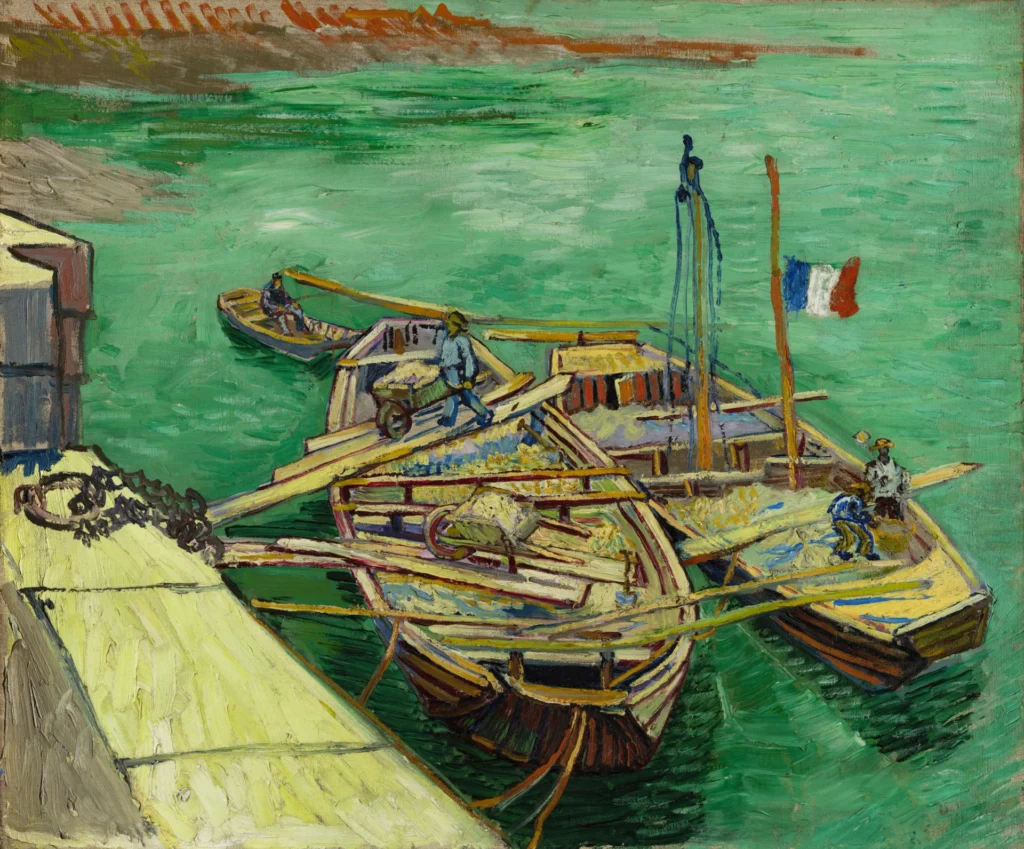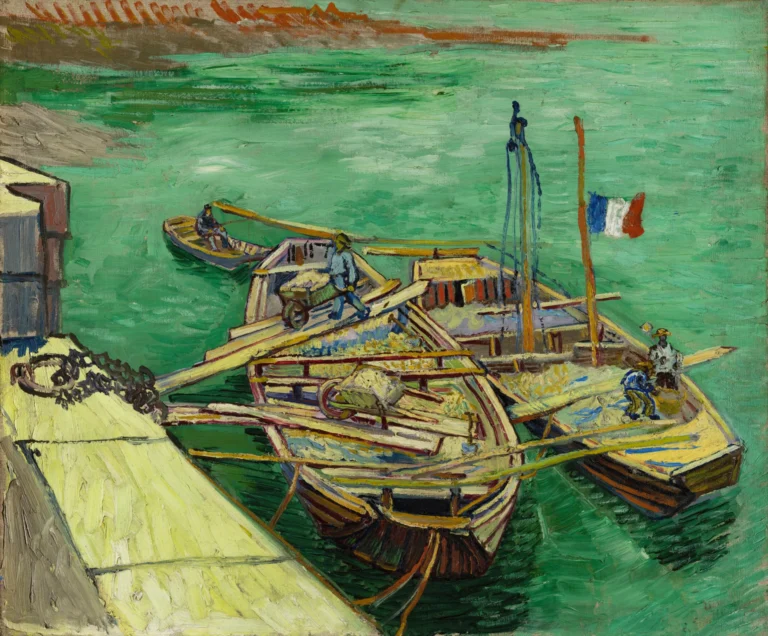Quay With Men Unloading Sand Barges (1888)
Quay with Men Unloading Sand Barges is a painting by Vincent van Gogh that captures men working hard to unload sand from barges on the Rhône River. Painted in Arles, France, during the summer of 1888, this artwork reflects Van Gogh's fascination with everyday labor, which he considered spiritually resonant. The use of color and composition are heavily influenced by the works of Eugene Delacroix, illustrating Van Gogh's artistic growth and the biblical symbolism associated with the labor being portrayed. The piece is both a visual study and a spiritual commentary, connecting Van Gogh's life to the elements of faith and community.
Summer of 1888
About the Artwork
In the summer of 1888, Vincent van Gogh resided in the enchanting town of Arles, where he sought to capture the vibrant life around him. The painting Quay with Men Unloading Sand Barges emerged from this period, illustrating the daily labor performed by men unloading sand from barges. This depiction was not just a moment frozen in time; it reflected Van Gogh's deep admiration for the working class and their spiritual connection to their labor. He was largely influenced by Eugène Delacroix's brilliant use of color, which urged him to incorporate bold hues into this oil study. The symbolic aspects of the painting connect to biblical themes, evoking the timeless relationship between toil and spirituality, ultimately serving as both a tribute to hardworking individuals and the collaborative artistic spirit he shared with friends like Paul Gauguin and Émile Bernard.
Did You Know
Liked what you see? Add it to your collection.
Enjoyed reading? Share it.
... continued
Inspiration and Influence
The painting was influenced by Eugene Delacroix, particularly his use of colorization. Van Gogh was deeply inspired by Delacroix's works and incorporated similar color techniques into his own paintings, such as those seen in 'Sunflowers,' 'Sower with Setting Sun,' and 'Café Terrace at Night'.
Composition and Setting
The painting depicts men unloading sand from barges on the Rhône River to a quay in Arles, a location close to Van Gogh's home. The scene focuses on the labor and toil of the men, which held significant spiritual resonance for Van Gogh throughout his career.
Symbolism
The painting is rich in symbolism. The sand may refer to biblical themes, such as the Parable of the Wise and Foolish Builders or the verse from Genesis 3:19, 'for dust thou art, and unto dust shalt thou return.' Additionally, the men working could be seen as representations of Van Gogh, his friend Paul Gauguin, and Emile Bernard, symbolizing their collaborative artistic venture and their affirmation of faith in Christ.
Artistic Style
The painting is characterized by its solid and attentive depiction of the barges and workmen, while the setting is minimal and somewhat unfinished. This contrast highlights the focus on the labor and the men involved.
Historical Context
Van Gogh painted this oil study in the summer of 1888. He described the motif in a letter to his brother Theo, indicating his interest in capturing the everyday labor and activities of the people in Arles.










